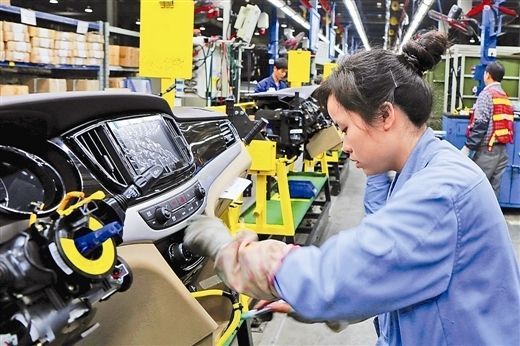


Chinese enterprises are gradually ranking among the upstream manufacturers of high added value as China improves its status on the global value chain of the manufacturing industry, said a report issued by the World Intellectual Property Organization (WIPO) on Nov. 20.
The report “World Intellectual Property Report 2017: Intangible Capital in Global Value Chains” carried out in-depth case study on three global industries including coffee, solar panels, and smartphones.
It revealed that nearly one third of the value of manufactured products sold around the world comes from “intangible capital,” such as branding, design, and technology.
East Asia, North America, and Europe are the major study regions of the report because they share the closest in relation in terms of supply chain.
The three regions, as high-income “headquarter economies,” have a similar production mode, that is, export high value-added products and services to middle-income manufacturing economies and then re-export them after assembly.
Japan, the US, and Germany used to be the leading “headquarter economies,” but Chinese enterprises have been gradually approaching the upstream of the value chain in recent years, bringing huge change to the traditional pattern.
For instance, through branding and high investment in research and development, Chinese tech giant Huawei has become one of the major producers of high-end smartphones. In addition, Chinese enterprises, such as Xiaomi, Oppo, and Vivo, are also among the top 10 selling brands in the world.
“Intangible capital will increasingly determine the fate and fortune of firms in today’s global value chains. It is behind the look, feel, functionality, and general appeal of the products we buy and it determines success in the marketplace,” said WIPO Director General Francis Gurry. “Intellectual property, in turn, is the means by which companies secure the competitive advantage flowing from their intangible capital.”
 Fire brigade in Shanghai holds group wedding
Fire brigade in Shanghai holds group wedding Tourists enjoy ice sculptures in Datan Town, north China
Tourists enjoy ice sculptures in Datan Town, north China Sunset scenery of Dayan Pagoda in Xi'an
Sunset scenery of Dayan Pagoda in Xi'an Tourists have fun at scenic spot in Nanlong Town, NW China
Tourists have fun at scenic spot in Nanlong Town, NW China Harbin attracts tourists by making best use of ice in winter
Harbin attracts tourists by making best use of ice in winter In pics: FIS Alpine Ski Women's World Cup Slalom
In pics: FIS Alpine Ski Women's World Cup Slalom Black-necked cranes rest at reservoir in Lhunzhub County, Lhasa
Black-necked cranes rest at reservoir in Lhunzhub County, Lhasa China's FAST telescope will be available to foreign scientists in April
China's FAST telescope will be available to foreign scientists in April "She power" plays indispensable role in poverty alleviation
"She power" plays indispensable role in poverty alleviation Top 10 world news events of People's Daily in 2020
Top 10 world news events of People's Daily in 2020 Top 10 China news events of People's Daily in 2020
Top 10 China news events of People's Daily in 2020 Top 10 media buzzwords of 2020
Top 10 media buzzwords of 2020 Year-ender:10 major tourism stories of 2020
Year-ender:10 major tourism stories of 2020 No interference in Venezuelan issues
No interference in Venezuelan issues
 Biz prepares for trade spat
Biz prepares for trade spat
 Broadcasting Continent
Broadcasting Continent Australia wins Chinese CEOs as US loses
Australia wins Chinese CEOs as US loses